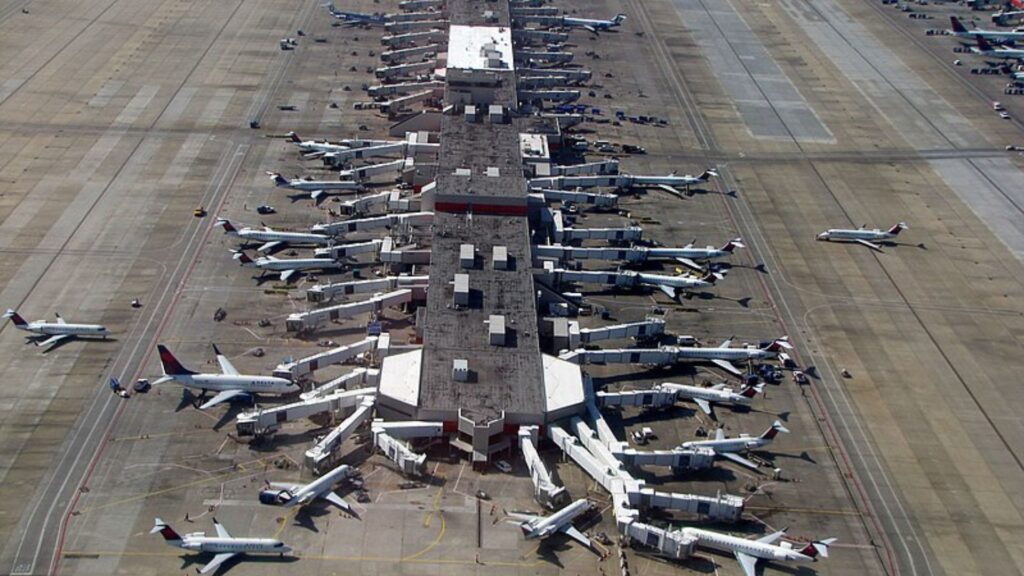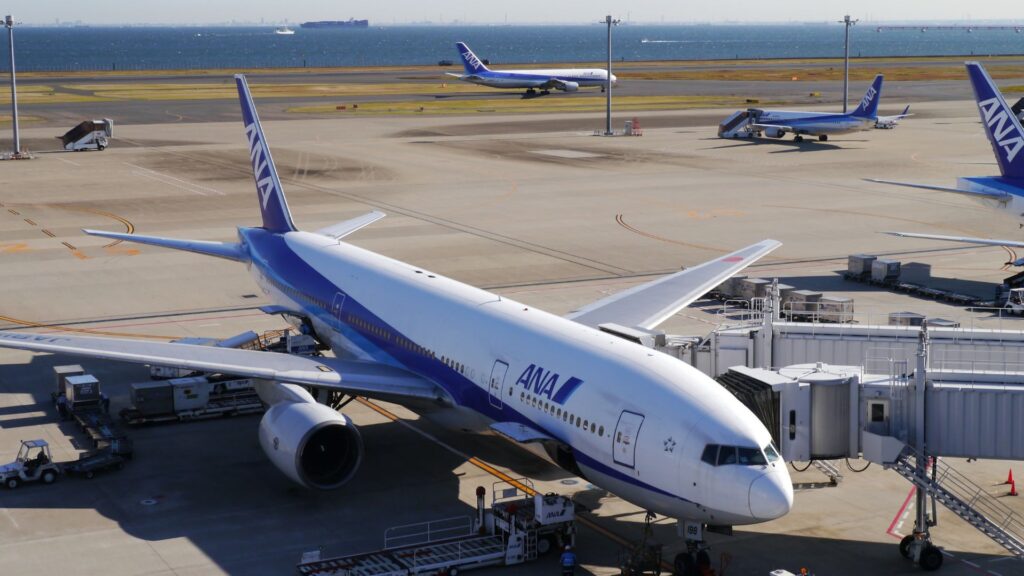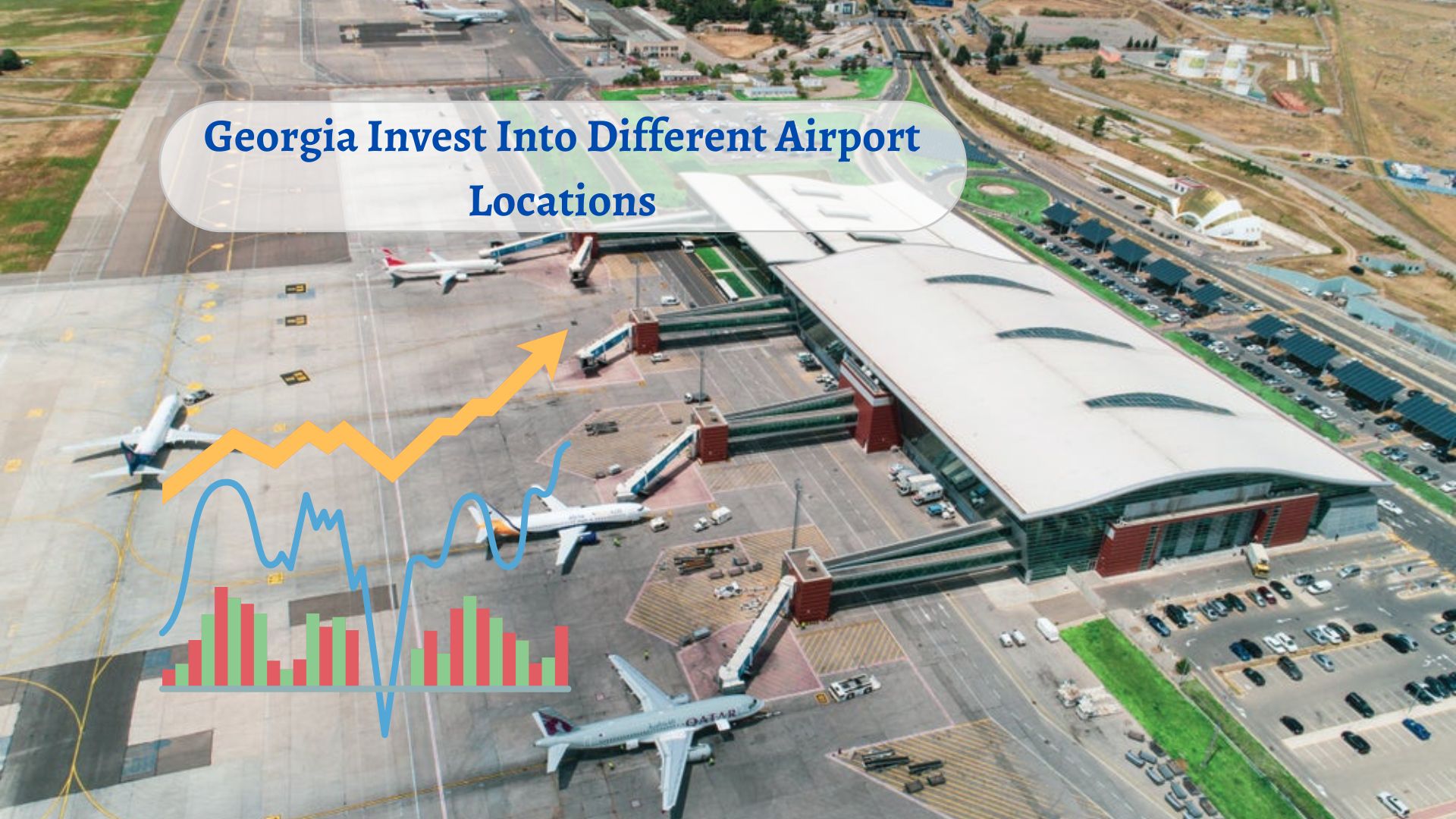Why Should Georgia Invest Into Different Airport Locations: Georgia, a state celebrated for its historical heritage, diverse landscapes, and robust economic growth, is at a crucial juncture in its aviation development.
As the state’s influence broadens on both a national and global scale, the need for strategic investment in multiple airport locations becomes more pronounced.
This in-depth analysis will explore the compelling reasons for diversifying Georgia’s airport infrastructure, highlighting the potential benefits, addressing challenges, and outlining long-term impacts.
Current Overview of Georgia’s Airport Network
Georgia’s aviation network is anchored by several key airports, each playing a distinct role:
- Hartsfield-Jackson Atlanta International Airport (ATL): The world’s busiest airport, serving as the primary hub for the state’s aviation operations.
- Regional Airports: Facilities such as Savannah/Hilton Head International, Augusta Regional, and Columbus Metropolitan cater to local and regional needs but have significant room for expansion.
- Rural Airports: Many rural airports face difficulties in maintaining consistent commercial services, highlighting a need for strategic investment.
- Air Cargo Operations: Particularly robust in Atlanta, highlighting the necessity for efficient logistics and infrastructure.
- General Aviation: Essential for business, emergency services, and recreational flying across Georgia.
Hartsfield-Jackson Atlanta International Airport

Hartsfield-Jackson Atlanta International Airport stands as a linchpin in Georgia’s aviation network, managing an impressive volume of passengers and cargo.
Despite its status as a global transit hub, the airport’s singular dominance presents challenges, including congestion and operational risks.
By investing in additional airport locations, Georgia can distribute traffic more effectively, reducing pressure on ATL and enhancing overall system reliability.
Regional Airports
Georgia’s regional airports, including those in Savannah, Augusta, and Columbus, are vital for their local economies and connectivity.
Enhancing these airports can address capacity issues, improve regional accessibility, and support economic development.
Expansion and modernization efforts at these airports could help meet the increasing demands of both passengers and freight.
Key Benefits of Diversifying Airport Locations
Economic Growth and Job Creation
Developing new airport locations can stimulate economic activity, attract businesses to previously underserved areas, create job opportunities, and boost local economies.
These investments can also increase property values and support the expansion of existing businesses.
Enhanced Regional Connectivity
Additional airports can significantly reduce travel times for residents across the state, providing increased options for both domestic and international travelers.
This improved connectivity can also better integrate rural and urban areas and enhance emergency and medical transport capabilities.
Decentralization of Air Traffic
Spreading air traffic across multiple airports can alleviate congestion at ATL, reduce the risk of system-wide disruptions, and improve overall air traffic management.
Specialization among airports—such as focusing on cargo, private aviation, or international flights—can lead to more efficient operations.
Tourism Expansion
Georgia’s diverse attractions, from coastal beaches to mountainous retreats, stand to benefit from improved airport access.
New and expanded airports can facilitate easier travel to various tourist destinations, support the development of new tourism markets, and handle seasonal tourist surges more effectively.
Technological Innovations
Investing in new airport infrastructure provides an opportunity to integrate advanced technologies. This includes implementing smart airport concepts, adopting sustainable and eco-friendly designs, and incorporating cutting-edge security and passenger experience technologies.
Potential Investment Locations for Georgia’s Airports

- Coastal Georgia: With its growing population and tourism sector, expanding airport facilities in coastal Georgia can enhance access to popular beach destinations, support the port industry in Savannah, and attract international flights from Europe and the Caribbean.
- North Georgia Mountains: Investing in airport infrastructure in the mountainous regions can boost tourism to natural attractions, improve access for outdoor enthusiasts, and support the burgeoning wine industry in the area.
- Central Georgia: Expanding airport facilities in central Georgia can serve as a strategic backup to Atlanta’s airport, provide easier access to the state capital for government and business travelers, and support the growth of local educational institutions.
- South Georgia: Enhancing airport infrastructure in South Georgia can improve agricultural export capabilities, facilitate access to Florida markets, and support the region’s growing manufacturing sector.
Challenges and Considerations
- Environmental Impact: Airport expansion must address concerns related to noise pollution, ecological disruption, and carbon emissions. Careful planning is required to mitigate these impacts and preserve local ecosystems.
- Funding and Financial Resources: Significant investment is necessary, requiring a combination of state and federal funds, and potential public-private partnerships. Long-term maintenance and operational costs must also be considered in financial planning.
- Regulatory Hurdles: Expanding airport infrastructure involves navigating complex regulatory frameworks, including FAA approvals, environmental impact assessments, and local zoning laws. Coordination with existing air traffic control systems is also essential.
- Community Engagement: Gaining support from local communities is crucial. This involves addressing concerns about noise and traffic, demonstrating clear economic benefits, and involving communities in the planning and decision-making processes.
Global Case Studies: Effective Multi-Airport Systems

Examining successful multi-airport systems around the world provides valuable insights:
- London: The network includes Heathrow, Gatwick, Stansted, Luton, and City airports, each serving different roles and functions.
- New York: JFK, LaGuardia, and Newark airports collectively manage the needs of a large metropolitan area effectively.
- Tokyo: Haneda and Narita airports handle domestic and international traffic, showcasing efficient multi-airport management.
- Paris: Charles de Gaulle and Orly airports complement each other, catering to diverse flight routes and passenger needs.
- San Francisco Bay Area: Includes SFO, Oakland, and San Jose airports, optimizing regional connectivity and capacity.
Technological Advancements in Modern Airports
Advancements in technology are revolutionizing airport operations:
- Biometric Identification: Enables faster and more secure check-ins and boarding processes.
- Artificial Intelligence (AI) and Machine Learning: Enhances maintenance, security, and passenger experience through predictive analytics and automation.
- Sustainable Technologies: Includes solar power, electric ground vehicles, and water recycling systems, contributing to environmental sustainability.
- Advanced Security Measures: Implements cutting-edge technology to ensure passenger safety and streamline security procedures.
Economic Impact Analysis
Investing in diversified airport locations can yield substantial economic benefits:
- Job Creation: Direct employment in airport operations, as well as indirect jobs in related industries such as hospitality and transportation.
- Revenue Generation: Increased tax revenue for local and state governments, boosted business activity, and potential for new business development around airport zones.
- Long-Term Economic Benefits: Enhanced competitiveness, improved logistics for existing industries, and the potential for developing aerotropolis concepts around new airports.
Conclusion
Strategic investment in diverse airport locations across Georgia presents a significant opportunity to drive economic growth, enhance regional connectivity, and position the state as a leader in modern aviation infrastructure.
While challenges related to funding, environmental impacts, and regulatory requirements exist, the potential benefits for communities, businesses, and the state economy are substantial.
By carefully planning and executing a diversified airport strategy, Georgia can address current needs and prepare for future growth and advancements in the aviation industry.
FAQs: Why Should Georgia Invest Into Different Airport Locations
1. Why should Georgia invest in new airport locations?
Investing in new airport locations can stimulate regional economic growth, enhance connectivity, reduce congestion at major hubs, and support tourism and cargo operations across the state.
2. What are the economic benefits of expanding airport infrastructure?
Expanding airport infrastructure can boost job creation, attract businesses, increase property values, stimulate local economies, and enhance the state’s competitive edge in attracting investment and tourism.
3. How does airport diversification improve regional connectivity?
Airport diversification reduces travel times, provides more domestic and international options, better integrates rural and urban areas, and improves emergency and medical transport capabilities throughout Georgia.
4. What are the potential challenges of developing new airports?
Challenges include environmental impacts, high initial costs, complex regulatory requirements, funding needs, and ensuring community support while addressing concerns about noise and increased traffic.
5. How can Georgia address environmental concerns related to new airports?
Georgia can address environmental concerns by implementing noise reduction measures, protecting local ecosystems, adopting sustainable practices, and conducting thorough environmental impact assessments before development.
6. What technological advancements can be integrated into new airports?
New airports can incorporate biometric identification, AI for predictive maintenance, smart baggage tracking, sustainable technologies, and advanced security systems to enhance efficiency and passenger experience.
7. Can you provide examples of successful multi-airport systems?
Successful multi-airport systems include London (Heathrow, Gatwick), New York (JFK, LaGuardia), Tokyo (Haneda, Narita), and Paris (Charles de Gaulle, Orly), each efficiently managing diverse aviation needs.
8. How can regional airports in Georgia benefit from expansion?
Expansion of regional airports in Georgia can enhance local connectivity, support economic development, attract new businesses, and improve access to regional and international destinations, boosting local economies.

